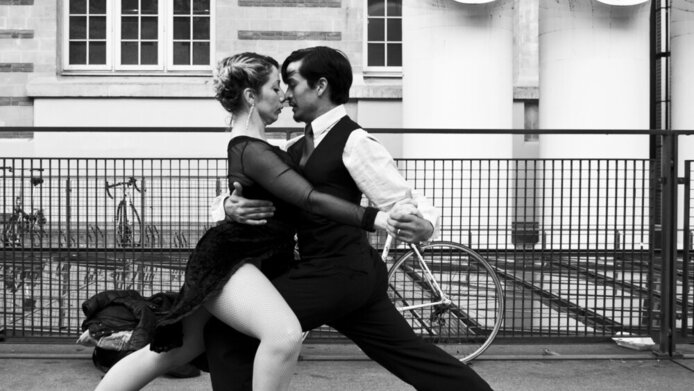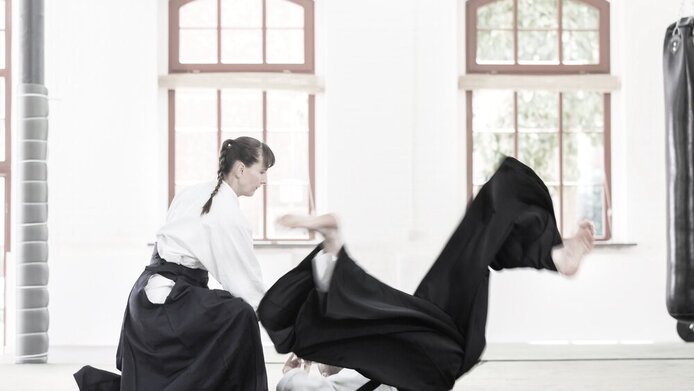Decoding embodied knowledge

Tango is more than just a dance. It is the embodiment of passion and sensuality, involving a close connection between two individuals and expressive improvisation. Tango is about leading and following, about sensing and body awareness. But what exactly happens in the body during this kind of interaction and how does it work? What, for instance, enables someone who is improvising to take just the right step at the right moment and thus display good decision-making?
Thinking and feeling
These are the questions that the cognitive scientist Michael Kimmel explores. With the support of the Austrian Science Fund FWF he applies the method of empirical phenomenology to designing a theory of interaction and improvisation skills, thus engaging in pioneering basic research. More specifically, Kimmel investigates the interaction skills of experts and beginners in tango argentino and contact improvisation, aikido, shiatsu and Feldenkrais practice. These disciplines have in common that they require continuous rapport and micro-coordinative as well as improvisational competencies – a fundamental triangle to be studied when exploring the interaction of bodily and cognitive skills.
Cognitive bases of interaction
There is a surge of interest among researchers in this kind of interpersonal coordination. Brain scans permit researchers to observe how brains synchronise while their hosts interact. Insights into interaction will also play an increasingly important role in human-computer interfaces. In a professional setting this is of great relevance, for instance, when it comes to situational awareness in challenging activities such as disaster relief or surgery. But measurements alone will not suffice to describe such highly complex processes. “So far we have few subjective accessing methods”, explains the trained cognition linguist Michael Kimmel, “but there is growing interest in using social-science approaches in cognition science.”
Drawing up an inventory of implicit knowledge
In order to probe the multi-layered mechanisms of implicit knowledge, Kimmel has put together a team of researchers, each of whom is also an expert in one of the physical disciplines he investigates. The team focuses on the active sensory perception of one’s own and the other's body as well as on context-savvy action strategies in real time and the self-structuring required for both facets. In interviews and through methods of “thinking aloud” they have examined in a targeted manner what the respondents felt in their bodies, where they felt it, what their inner perception and the external perception were, which successive actions were planned or what available options they discerned. “We have dissected the experience made by people into thin slices. The challenge is to phrase questions in such a way that the answers tell us something about someone’s body knowledge and do not induce that person to engage in storytelling but have them feel what is going on inside”, notes Kimmel. He explains that this reveals structures of implicit knowledge which “disappeared” in the experts’ bodies. “We assume that there are cognitive bases of these semi- or subconscious structures. We want to assemble and describe this construction kit of basic skills.”
Factors for successful interaction
Kimmel explains that well-trained attentional skills and mechanisms of so-called “smart perception” are fundamental for real-time responsiveness and fluid action – and, thus, for social behaviour. Smart perception means being able to comprehend the perceptual structure of a given discipline in a one-shot manner, at a single glance or through briefly touching. In addition, the results of the research project indicate that a repertory of techniques such as steps, rotations or touches make up the building blocks for improvised action. As in any complex physical skill, the co-presence of a person also influences the partner. In this context, the “pre-calibration” of eyes, posture or muscle tension are also factors affecting successful interaction. “Individuals who pay attention to their own role, for instance by adopting a good posture, also have an immediately positive influence on their partners, on their readiness for action and on communication as a whole”, stresses Kimmel.
Body knowledge has a broad range of applications
Apart from decoding body knowledge, the project furnishes additional benefits. The interviewing methods the team uses, which include imagination probes, can be grafted to other fields and used for knowledge transfer e.g. in learning sports, crafts and therapeutic skills. This is important, as knowledge is still not conveyed explicitly in many areas. “Our research provides analytical tools for a variety of communities of practice that face similar basic issues”, notes Kimmel who is convinced that understanding the principles of a body discipline will change one’s outlook. “Knowledge about improvisational body skills makes it easier to cope with the unforeseen in a structured way. And that, by the way, would be another interesting field for research.”
Personal details Michael Kimmel is a cognitive scientist at the University of Vienna. His work in the area of embodiment research deals with embodied interaction and expertise (using phenomenological and biomechanical methods) as well as with the relationship between sensory systems, imagination and language. Kimmel has successfully conducted several projects supported by the FWF. In 2015, a project was started with him as principal investigator on the topic of “embodied creativity in dyads” at the University of Vienna’s “Cognitive Science” research platform.
Related publications






